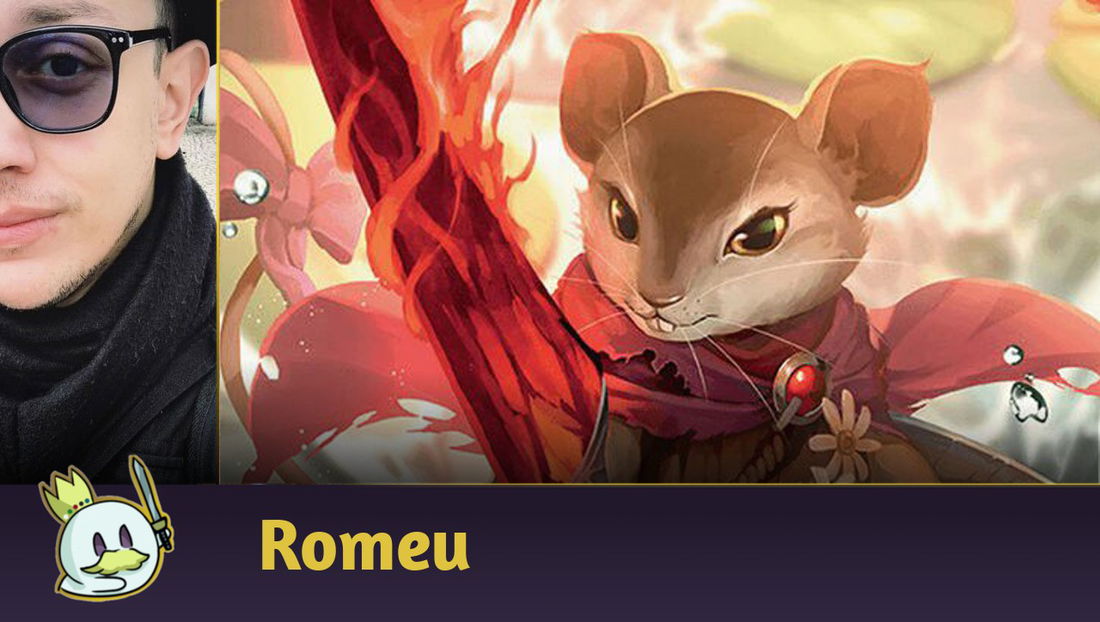Dragons are a central figure on the plane of Tarkir and one of the most famous creature types in Magic: The Gathering, even featuring in a world champion deck with Yuta Takahashi's Izzet Dragons in 2021.
The last time we visited the plane, Dragon decks were also a core shell of the Standard Metagame, often driven by the cycle of Dragonlords, legendary creatures with powerful effects.
Now, the Dragonlords are no more, and there is harmony between the Khans and the new Spirit Dragons, a new cycle of three-color legendary creatures, each with a specific ability around the theme of each of the clans.
Ad
In this article, we take a look at each of the new cards from this cycle individually and consider how they might affect Standard this season!
Betor, Kin to All

Betor, Kin to All has a very efficient body for its cost and the classic evasion we expect from almost all dragons. Its ability requires a favorable board position to start generating advantages, but it doesn't take much work for it to become a source of card advantage and threat in a single card as it counts its own toughness for the triggers, so all it takes is an X/3 or higher creature, like Sentinel of the Nameless City or Preacher of the Schism for Betor to trigger a draw in the end step.
The other abilities seem a bit win more. Untapping your creatures can make a difference in attrition games (and anyone who lived through Khans of Tarkir Standard knows how common these permanent-heavy boards were on Abzan mirrors), but there may be rare times when the difference is so substantial that you're not winning the game anyway, and the third trigger seems technically unviable for competitive formats and should only occur in Commander, where it will work with combos like Bloodletter of Aclazotz and the like to finish the board.

There's no doubt that Tarkir: Dragonstorm will bring substantial changes to Standard, and one of the likely ones is the rise of three-color archetypes driven by powerful cards in clan combos, like the new Severance Priest for the Abzan, and given the near-perfect mana base the format has had until rotation, the concessions to building multicolored archetypes are at a low ebb, with the most viable punishment revolving around Sunspine Lynx.

In this case, Betor, Kin to All could serve as a curve-topper in Abzan Midrange, similar to how Golgari lists already exist today, or even as a payoff for a “big mana” version with Up the Beanstalk, Overlord of the Mistmoors and Ride’s End combined with Betor and other cards that trigger the enchantment to generate value, but in this case, it will also be competing for slots with Overlord of the Hauntwoods.
It is possible to consider the new Abzan dragon for Domain Ramp or Four-Color Zur lists as well, but in both cases, Betor seems like a win more card rather than something that actively helps the archetype be better than it is today.
Neriv, Heart of the Storm

I've read some complaints on social media and in some groups about how Neriv, Heart of the Storm doesn't trigger its own ability. If it did, the new dragon would probably have to cost 
As it stands, Neriv is a perfect follow-up to cards like the new Zurgo, Thunder's Decree or any creature with the Mobilize ability, iconic of the Mardu clan in this set, and if there is a creature with the classic five-mana, 4/4, with Haste and Flying and another ability in the expansion. It's also a perfect piece to keep on the board and threaten a potential hit-kill - and speaking of Haste interactions, Enduring Courage could be one of the new dragon's best friends.
Ad

Enduring Courage grants an increase in power and Haste to any creature that enters the battlefield, in addition to being a difficult card to kill without exile effects. In addition to giving Haste to Neriv, who would enter the battlefield hitting for 12 damage, it grants this same buff to tokens created by creatures with Mobilize.

Other powerful interactions with Neriv include Skitterbeam Battalion, which creates two copies of itself with Haste and Trample when cast, each of which would be dealing four damage with the dragon on the board, Aurelia, the Warleader which would guarantee 12 or more damage in two combat phases, and Flamewake Phoenix that can be returned from the graveyard with Neriv itself to attack flying the turn it comes into play.

Another interaction that will probably accompany a Mardu deck with Neriv is Screaming Nemesis with damage spells. The new dragon does not specify the type of damage that it doubles, so interactions like using Witchstalker Frenzy on Screaming Nemesis are even more lethal with it in play.
Shiko, Paragon of the Way

We can think of Shiko, Paragon of the Way as a Snapcaster Mage for a three-mana spell, but without flash and with a much larger body. It's perfect when it comes to exiling cards like Stock Up or cards that can change the course of the game, like Temporary Lockdown or Brotherhood's End, but it becomes considerably worse when the chosen card is a Sleight of Hand or Destroy Evil.
However, the new Jeskai dragon goes beyond just being a means of resorting to sources of card advantage and removal: it allows you to cast nonland permanents, which include cards like Abhorrent Oculus and Proft's Eidetic Memory, or enchantments like Stormchaser's Talent, or targeted hate like Loran of the Third Path, making it much more versatile than its predecessors.

Despite these advantages, Shiko's first home is likely to be a traditional Jeskai Control or Jeskai Midrange. Having a threat and a five-mana win condition that reuses cards like Stock Up and Temporary Lockdown is more than enough to earn it slots in attrition lists. Add in the possibility of using more efficient removal and other Jeskai-colored cards that are expected to emerge on Tarkir, and the transition seems likely.
Ureni, the Song Unending

The spirit dragon of the Temur, Ureni, the Song Unending is every Ramp archetype's dream as it interacts with everything a Ramp deck wants: its body is a two-turn clock in most games, it has an effect when it comes into play that can clear the board of Aggro decks that tend to prey on Ramp, and it comes with built-in protection against two of the format's major removal colors - as a bonus, its design is an improvement on what was a mainstay of Ramp lists in the Dragons of Tarkir season, Dragonlord Atarka.
Ad

The obvious inclusion for the new card is Domain Ramp decks, most of which feature Overlord of the Hauntwoods, which provides easy access to 

Post-rotation, the future looks bright for the Temur Dragon: Atraxa and Zur will be leaving the format, and unless there is a better payoff in Final Fantasy or Edge of Eternities, it's very likely that the best endgame bomb choice will be a dragon that clears the board when it enters, protects itself from all the major removal in the Metagame, and provides a two-turn clock against the opponent.
Teval, Arbiter of Virtue

Of all the five dragons in the cycle, Teval, Arbiter of Virtue seems the hardest to evaluate. In essence, it's a 6/6 for five mana with Flying and Lifelink, which would already grant it comparable statuses with Baneslayer Angel - an absurdly strong card when released in M10, but far from being ideal for Magic's design in 2025 - but it also comes with an advantage and drawback: giving Delve to all your cards, at the cost of making its controller lose life equal to the mana value of the cards cast.

In essence, this means we can cast Omniscience for 
So we need to look at Teval from other perspectives: its body is decent and means trouble if it stays on the board, and the best way to take advantage of the combination of life gain + Delve is to use cards in the graveyard to pay for smaller colorless costs, such as Preacher of the Schism or cheap cards that feed your graveyard with other spells, such as Founding the Third Path.

In addition, it must be treated as a complement to the game plan and not the endgame of the archetype. After all, having to spend mana and life to protect your win condition can be very costly, especially if Screaming Nemesis blocks your ability to gain life for the rest of the game.
Wrapping Up
That's all for today!
If you have any questions, feel free to leave a comment!
Thanks for reading!








— Comments0
Be the first to comment